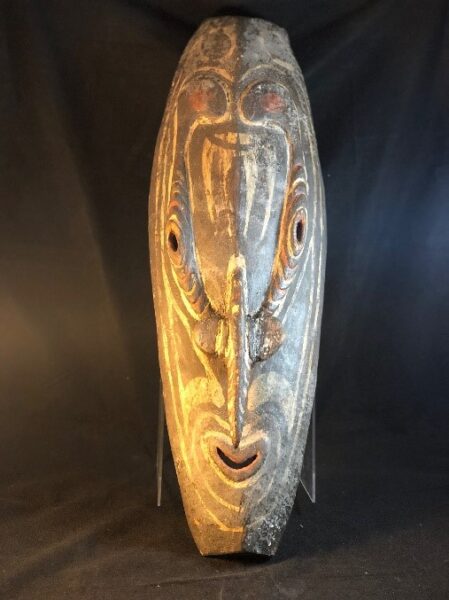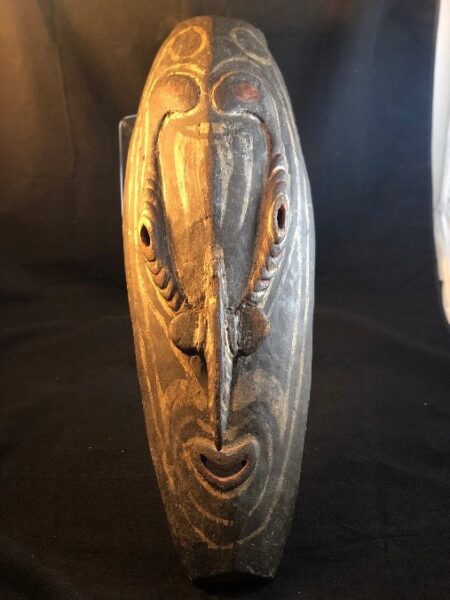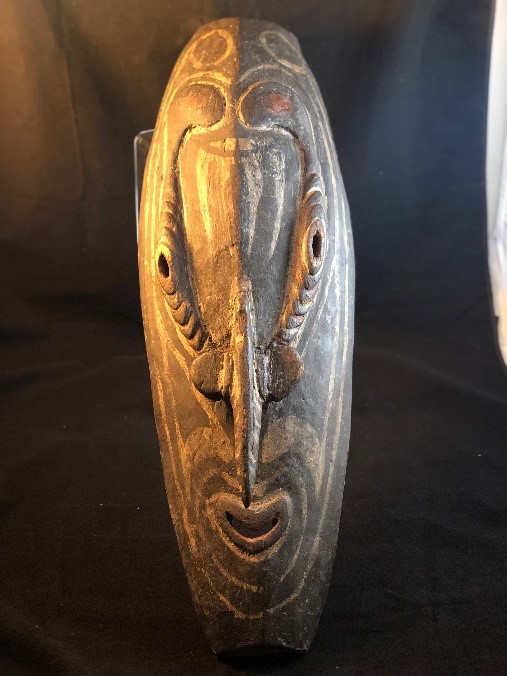Masks from the Sepik Region are carved from a single piece of wood that is incised and painted with colorful patterns. Common features include the beak-shaped nose, which can face either upwards or downwards, and concentric lines of red, yellow, white, and black pigments. The masks are generally used in rituals for the purpose of protection, and these often take place during initiations of young men into adulthood. Each dancer who wears the mask will do his best take on the characteristics of the spirit during the rituals, and the rituals invite the spirits to join the people in their dances and to share their power. The masks are also displayed as symbols of the power and energy that they hold.

Smiling Sepik Region Mask
Iatmul culture
Early to mid-20th century
Wood and pigment, L. 71 cm x W. 21 cm x H. 12 cm
Drury collection #NN.006

Smiling Sepik Region Mask
Iatmul culture
Early to mid-20th century
Wood and pigment, L. 71 cm x W. 21 cm x H. 12 cm
Drury collection #NN.006
For more information, you may contact the researcher(s) noted in the title of this exhibit entry, or Dr. Billie Follensbee, the professor of the course, at BillieFollensbee@MissouriState.edu

